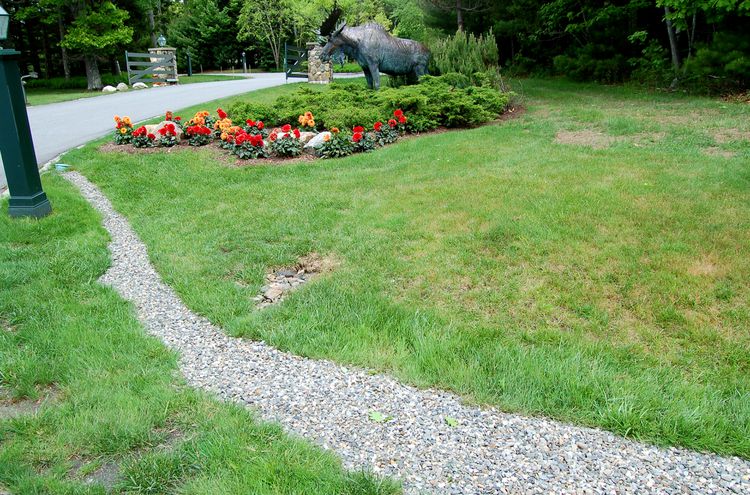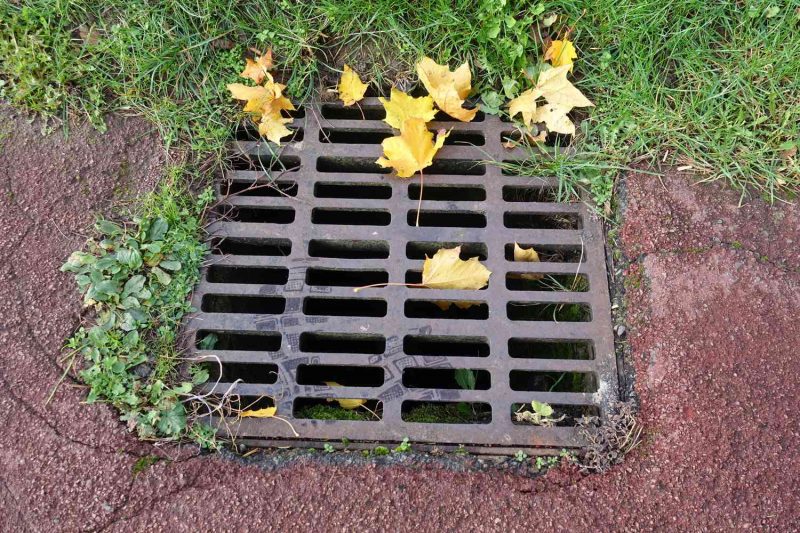
Stagnant water in a yard can cause a variety of issues. Puddles can create ideal conditions for mosquitoes to breed, while waterlogged sections of the lawn increase the chances of mud being brought indoors by pets and people. Areas of grass submerged in standing water struggle to thrive, making them susceptible to moss. Additionally, an overabundance of water can pose risks to the integrity of your home’s foundation.
Stagnant water often arises from two primary issues: soil that does not drain well and depressions in the landscape. Additionally, lawn thatch, which consists of a dense layer of decaying leaves, roots, and stems situated between the soil and the grass, can contribute to the problem. Furthermore, excessive foot traffic can compress the soil, resulting in inadequate drainage. Fortunately, with some effort, you can address the issue of water accumulation in your yard.
Contents
Soil with inadequate drainage
The type of soil significantly influences water drainage on lawns, as most of the drainage happens through the soil itself. Soils that are loamy or sandy tend to have better drainage capabilities compared to clay-heavy soils. While clay retains water, loamy and sandy soils are recognized for their ability to allow water to pass through easily.
The Answer
Incorporate organic materials into the clay soil to enhance its structure. This process helps to alleviate the dense clay layers present in the soil. While compost is the most frequently used amendment, there are alternative methods to enrich garden soil. For instance, organic mulches like bark or wood chips decompose gradually, contributing to better drainage in the soil beneath them.
Lawn spaces present a challenge: When grass covers the ground, it becomes difficult to reach the clay-heavy soil that requires breaking up. In severe situations, it might be necessary to strip away the existing lawn and begin anew.
Thatch and Soil Compression
Soil contains more than just clay that hinders water from seeping down and leads to surface pooling. Thatch in lawns and soil compaction also contribute to poor drainage by creating obstacles that retain water.
The Answer
Based on the severity of the thatch problem in your lawn, there are two possible solutions:
- Thatch Removal: In cases of light accumulation, use a dethatching rake or a powered dethatcher to eliminate the thatch.
- Core aeration: In cases of significant lawn distress, utilize an aerator tool or a power aerator to aerate the grass.
Compaction typically happens due to excessive foot traffic. While core aeration can help alleviate the issue, a more lasting solution might involve constructing a pathway to accommodate the heavy footfall.
Depressed Areas
If your property is situated at the base of a hill and experiences frequent rainfall, it’s likely that you may encounter standing water in your yard, either now or in the future. Additionally, you might face issues with low-lying areas in certain parts of your yard where the ground dips.
The Answer
If there is a depression causing water to accumulate close to your home, the initial step is to adjust the grading around the foundation to stop water from infiltrating it. Addressing this issue is a higher priority than managing water accumulation in other areas of the yard.
Two prevalent methods exist for directing water away from depressions or areas prone to pooling. One such method is the French drain, which consists of a trench filled with gravel that is inclined toward a designated discharge location. Typically, French drains incorporate a perforated plastic pipe, known as drain tile, to efficiently transport surplus water. The discharge location can be a storm drain, if suitable, or a dry well that is set up on the premises.
A dry creek is designed to resemble a natural creek bed, featuring a surface of gravel and stones. While they are often more visually appealing than a French drain, they usually lack a drain pipe. Similar to a French drain, a dry creek can channel excess water into a storm drain or a dry well.

Ways to Enhance Water Drainage
There are various techniques to enhance water drainage in your yard, with some being more intrusive and requiring more time than others.
Surface Water Drainage
Ensuring that the runoff redirected by a dry creek or French drain does not flow onto a neighbor’s land is crucial. The consequences could range from strained relations to potential legal action. If there are storm sewers on your street, you might consider directing the runoff towards them. However, this could lead to complications with local authorities. It is advisable to obtain approval from your local Department of Public Works beforehand.
If you reside in an urban environment with sidewalks, directing runoff towards the street can still pose issues. Diverting water onto the sidewalk can lead to complications with local regulations, as it can create hazardous conditions for pedestrians during winter when the water freezes. Additionally, in the warmer months, the runoff can promote the growth of algae, making the sidewalk slippery.
Arid Wells
Typically, the most effective method for ending a French drain or dry creek is by utilizing a dry well. A dry well is essentially a sizable, deep excavation filled with stones. Water accumulates in the well and slowly seeps into the adjacent soil. Many dry wells feature perforated plastic containers that hold the stones in place and prevent soil from entering, which can obstruct the rocks and diminish their drainage efficiency.
When creating a dry well, it’s advisable to opt for a larger size instead of a smaller one, as you can always expand a rock pit later if you find it inadequate. Increased runoff requires a larger rock pit, but the volume can be uncertain since the amount of rainfall can vary each year. Typically, a dry well measuring 4 feet in width and 4 feet in depth should be adequate.
Dangers Associated with Stagnant Water
Stagnant water serves as an attractive habitat and source of hydration for various undesirable species and organisms that pose significant health risks to both humans and animals, such as:
- Mosquitoes reproduce in aquatic environments and are capable of transmitting illnesses like malaria, West Nile virus, Zika virus, and encephalitis.
- Rodents, such as rats and possums, can transmit diseases via their droppings or through bites and scratches, as they utilize water sources for nesting and drinking.
- Water can harbor pathogens like bacteria (including E. coli), viruses, and parasites, which can cause illness in both humans and animals.
- Mold growth in water can lead to respiratory problems in both humans and animals.
- Certain varieties of algae that thrive in stagnant water can generate toxins harmful to both humans and animals.

